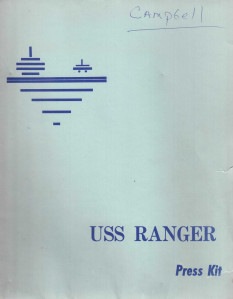Malcolm R. Campbell's Blog, page 217
April 3, 2014
Review: ‘Long Man’ by Amy Greene
from Literary Aficionado
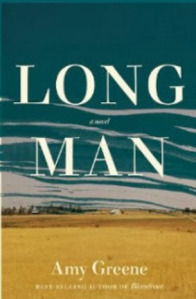 Amy Greene (“Bloodroot”) lives in the foothills of eastern Tennessee where she was born and raised and, as the lyrical prose in Long Man testifies, fell in love with the land and the blue-collar Appalachian people who cling to their world through floods and droughts with great determination.
Amy Greene (“Bloodroot”) lives in the foothills of eastern Tennessee where she was born and raised and, as the lyrical prose in Long Man testifies, fell in love with the land and the blue-collar Appalachian people who cling to their world through floods and droughts with great determination.
Annie Clyde Dodson is one of the valley’s last holdouts against eviction as the TVA completes a dam that will soon contain the waters of the river her Cherokee ancestors named Long Man. The river is rising and the TVA is dispersing Yuneetah’s residents before the lake claims their land forever. While Annie’s husband is ready to move on, Annie is too much a part of the valley to leave without a fight. Keeping the farm whole and safe for her three-year-old daughter Grace is more important than electricity.
The roads connecting Yuneetah to the world will be under water shortly after the moving-out deadline imposed by the TVA. Amos, a drifter who was born in the valley, comes back for one last look and his own hidden motives. Grace goes missing on a day Annie saw Amos in her cornfield. A desperate search begins. Some think Amos took her. Others think she ran off and drowned in the lake. The TVA refuses to draw down the water to give the searchers more time.
Long Man is at once a well-plotted, deliberately paced adventure and a dark love song to the mountain people who–like the Cherokee before them–are being displaced in the name of “progress.” The story is told from multiple points of view including Annie, her husband James, the bootlegger Silver who watches the world from her mountaintop, the sheriff who must do his duty, and Amos who moves through the woods and fields like a phantom. Each person has a story to tell as the drama unfolds and Long Man begins to take away the town.
 While the pacing of this highly descriptive and atmospheric narrative may frustrate readers who seldom read literary fiction, Greene’s novel is nonetheless an impeccable portrait of a doomed town and a resolute people. Annie, Silver and Amos are characters not easily forgotten–nor should they be.
While the pacing of this highly descriptive and atmospheric narrative may frustrate readers who seldom read literary fiction, Greene’s novel is nonetheless an impeccable portrait of a doomed town and a resolute people. Annie, Silver and Amos are characters not easily forgotten–nor should they be.
-
Note: when I posted this review on March 13 on Literary Aficionado, I hadn’t read Greene’s earlier novel Bloodroot. How I missed it when it first came out in 2011, I don’t know. Long Man is the kind of novel that leaves me wanting more words by the author. I’m reading and enjoying Bloodroot now and feel rather sad that when I’m done, I may have to wait for a couple years before seeing another Amy Greene book.
–Review by Malcolm R. Campbell, author of Emily’s Stories.


March 29, 2014
Former Ranger Pens Book on Yellowstone’s ‘Best’
from Farcountry Press
 Years ago, as a park ranger in Yellowstone, Alan Leftridge loved sharing his passion for the outdoors with other people.
Years ago, as a park ranger in Yellowstone, Alan Leftridge loved sharing his passion for the outdoors with other people.
“Seeing the excitement and enthusiasm on a visitor’s face is its own reward,” Leftridge says. “They come to a park asking ‘what is there to see and do?’ and you can see the anticipation build as you describe the natural wonders awaiting them. It’s the best part of the job.”
Now Leftridge has channeled that passion into Farcountry Press’ newest release, The Best of Yellowstone National Park ($19.95, Farcountry Press, 2014).
“As the world’s first national park, Yellowstone is a land of superlatives,” he says. “The park is home to the world’s largest collection of geothermal features, including geysers, mudpots, hot springs, and fumaroles. There are stunning wildflower displays, grizzly bears, wolves, bison, and elk, and wonderful hiking trails. It’s easy to share my excitement for such a spectacular place.”
From his home in Montana’s Swan Valley, Leftridge regularly ventures onto Yellowstone’s trails, photographing wildflowers, watching wildlife, and easing into the serenity of the mountains.
Leftridge says, “Over the years, I’ve spent many hours exploring Yellowstone. I wanted this book to read like an insider’s guide, as though a trusted friend was divulging all the best things to see and do in the park.”
The book describes the best day hikes, nature trails, backpack trips, boat tours, flora and fauna, historic sites, and more. There are sections on the best activities for kids and the best ways to spend a rainy (or snowy) day. Also included are the best cross-country ski trails and other activities for winter visitors.
-
You May Also Like: My review of Alan Leftridge’s The Best of Glacier National Park
 In addition to his contemporary fantasy set in Glacier National Park, Malcolm R. Campbell is the author of the collection of humorous stores “Jock Stewart Strikes Back.”
In addition to his contemporary fantasy set in Glacier National Park, Malcolm R. Campbell is the author of the collection of humorous stores “Jock Stewart Strikes Back.”


March 24, 2014
Freshly washed woods
 Most of us don’t like hiking in the rain. Last September, my brother and I got caught in a very cold Glacier Park thunderstorm near Mt. Gould. Before we got back, we had also been pelted with hail. Without umbrellas, we were drenched.
Most of us don’t like hiking in the rain. Last September, my brother and I got caught in a very cold Glacier Park thunderstorm near Mt. Gould. Before we got back, we had also been pelted with hail. Without umbrellas, we were drenched.
Fortunately, we found a warm fire in the hotel fireplace after the hike
When my brother and I, along with our wives and a spirited nephew hiked in light rain at Tallulah Gorge in the Georgia mountains last week, we carried umbrellas. We weren’t as cold as we were in Glacier. And we weren’t hiking in a hurry because–unlike the Glacier hike–it was raining when we started.
 Everything was fresh and the scents of wet rocks, wet earth and wet leaves were a far better than anything thing you can buy in an aerosol can at the grocery store. When we were kids, we walked and rode our bikes in the rain on purpose. Whether it was our feet or our wheels, we splashed through the biggest puddles we could find.
Everything was fresh and the scents of wet rocks, wet earth and wet leaves were a far better than anything thing you can buy in an aerosol can at the grocery store. When we were kids, we walked and rode our bikes in the rain on purpose. Whether it was our feet or our wheels, we splashed through the biggest puddles we could find.
We avoided the puddles at Tallulah. Nonetheless, I enjoyed the freshly washed woods. It reminded me of childhood walks.
It reminded me of how much we miss by purposely setting up most of our hikes under sunny skies. Within moderation, there’s much to be said for night, wind, rain and snow.
So-called “bad weather” is a face of nature we miss by staying inside.
–Malcolm
 Malcolm R. Campbell is the author of the comedy/mystery “Jock Steward and the Missing Sea of Fire.” Now you can pre-order the new book of stories “Jock Stewart Strikes Back” prior to the book’s April 1 release.
Malcolm R. Campbell is the author of the comedy/mystery “Jock Steward and the Missing Sea of Fire.” Now you can pre-order the new book of stories “Jock Stewart Strikes Back” prior to the book’s April 1 release.


March 20, 2014
Throwback Thursday – Four National Geographics
 This morning, I reached into one of the many boxes of old National Geographic Magazine’s storied in the garage and scooped out four issues at random, two from 1961 and one each from 1962 and 1964.
This morning, I reached into one of the many boxes of old National Geographic Magazine’s storied in the garage and scooped out four issues at random, two from 1961 and one each from 1962 and 1964.
These will probably be thrown out as part of my getting rid of old stuff project. Looking online for the December 1961 issue, I see it for sale on Amazon at $4.00 and on eBay at $34.99. What a price range!
I doubt that neither copy will sell. I’ve never had much luck selling old magazines. Time was, they were seemingly more valuable if you cut them apart and sold the pages with the advertisements.
Funny how a Great Northern Railway ad would sell quickly on eBay but if the same ad (along with other vintage examples) were offered as part of a complete issue, it was a harder sell.
The only copies I’m saving are those that are especially historic—some early space exploration issues, a John F. Kennedy tribute issue, and the issues that came out during the birth months and years of people in the family. I’m also saving some ads, mostly those having to do with train travel. Or, a few that are simply “strange” by today’s standards.
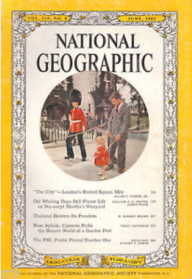 The December 1961 issue includes articles about “Life in Walled-Off West Berlin,” “Canada, My Country,” and “Australia’s Amazing Bowerbirds.” The West Berlin article includes a map of the city, now from almost another time and another place ever since the Berlin Wall came down. But as Russia rushed to annex Crimea, I’m reminded of those cold war days. When I saw Berlin, there was a wall there. That shows how long it’s been since I was there.
The December 1961 issue includes articles about “Life in Walled-Off West Berlin,” “Canada, My Country,” and “Australia’s Amazing Bowerbirds.” The West Berlin article includes a map of the city, now from almost another time and another place ever since the Berlin Wall came down. But as Russia rushed to annex Crimea, I’m reminded of those cold war days. When I saw Berlin, there was a wall there. That shows how long it’s been since I was there.
A Look at London
You can tell at a glance that the June 1961 issue includes an article about London. When I originally read the article about the city’s “Storied Square Mile,” I didn’t know I would see it six years later. The article includes a fold out map along with photographs of people, places, pomp and pageantry.
When this issue came in the mail, you could also read about the FBI, Thailand, rose aphids and whaling.
There’s also a cute ad of a boy leaving his house with a red wagon filled with all his stuff for Bank of America Travelers Cheques. I used to carry these years ago, but in time I got fed up with explaining to stores and hotels with clerks who said “we don’t take checks” that these aren’t the same as the potentially bad checks torn out of a check book. You’d think people in resort towns would know that.
They probably still don’t know it.
The Holy Land and New Guinea
 The December 1961 issue contains multiple articles about the Middle East. My father, who did some media consulting in the area in the mid-1950s probably liked the memories stirred up by this issue. If I had ever been there, I might be tempted to save this issue, though for what purpose, I’m not sure. I’m sure I still have this copy because my father saved it as part of his collection.
The December 1961 issue contains multiple articles about the Middle East. My father, who did some media consulting in the area in the mid-1950s probably liked the memories stirred up by this issue. If I had ever been there, I might be tempted to save this issue, though for what purpose, I’m not sure. I’m sure I still have this copy because my father saved it as part of his collection.
I haven’t been to New Guinea (or even the Canyon Lands of Utah), so the May 1962 issue isn’t tempting. It does have a space-aficionado article called “Telephone a Star: the Story of Communications Satellites.”
The article includes a picture of Telestar that would be launched that June. Teletar 2 would be launched the following year. At the time, this was BIG NEWS. Now, there are over a thousand operational satellites in orbit. The news media hardly even mention the launches any more.
They were still in orbit, though nonfunctional, as of last year. Big news at the time,  there was even a hit song about it that reached number one on the Billboard Hot 100 list. It was a catchy song then, but I doubt it would get much play today–unless you’re walking (or flying) down memory lane.
there was even a hit song about it that reached number one on the Billboard Hot 100 list. It was a catchy song then, but I doubt it would get much play today–unless you’re walking (or flying) down memory lane.
Memory Lane or Ancient History?
If you were there, going through a stack of National Geographic Magazines that came out during your lifetime is a trip down memory lane. I remember the events, the products and the global issues. Otherwise, this is all “ancient” history. Most of the stuff that ended up in these magazines probably isn’t on the RADAR in a high school history class. Perhaps the Berlin Wall will flit by in a footnote to the paragraph about Cold War–assuming the Cold War is even in the course. In a college’s “Recent U.S.” history course, perhaps the Cold War itself will make it into the course for a one-hour lecture. When Russia marched into the Crimea, a lot of people who didn’t know what the Cold War was started doing a lot of Google searches about it.
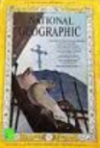 I saved these magazines, along with copies of noteworthy issues of Life, Look, Newsweek and the Saturday Evening Post because I though they would be important as keepsakes, as windows on the world as it was, and possibly (like old books) as antiques that might be worth money some day. The memories are wonderful, but I can no longer afford the space all these boxes take up. Plus, they’re heavy to move around.
I saved these magazines, along with copies of noteworthy issues of Life, Look, Newsweek and the Saturday Evening Post because I though they would be important as keepsakes, as windows on the world as it was, and possibly (like old books) as antiques that might be worth money some day. The memories are wonderful, but I can no longer afford the space all these boxes take up. Plus, they’re heavy to move around.
Perhaps they’ll have monetary value in another hundred years–like original photographs of the Civil War have now–but not being a rich person with a Downton Abbey sized house, I don’t have the space for that kind of collecting. And, I doubt my daughter wants to see a U-Haul truck arrive with a garage full of dusty old magazines arrive. She’s been to the Middle East, but I think she’ll always prefer her own pictures to those in the January 1964 issue of National Geographic.
Plus, I’m one of many millions of people who seem to have saved these magazines with the idea in mind that one day they would be rare.


March 15, 2014
Sometimes writers forget to back up their work
“Outside of a dog, a book is a man’s best friend. Inside of a dog it’s too dark to read.” – Groucho Marx
Cynical book reviewers often suggest some books are best eaten by dogs, used as doorstops and fireplace kindling, or lost in computer crashes. Sometimes they’re right.
 Since the writing that writers write is more often than not sitting in a DOC file on a computer’s hard drive, you’d think we’d backup our work every night with the same diligence that we run the dishwasher, turn off the lights and lock the front door.
Since the writing that writers write is more often than not sitting in a DOC file on a computer’s hard drive, you’d think we’d backup our work every night with the same diligence that we run the dishwasher, turn off the lights and lock the front door.
Flash drives that hold zillions of words make that so easy to do. But suppose somebody–possibly me–was really on a roll while writing a comedy mystery about a reporter looking for a race horse on a new computer. (Actually, Jock was looking for the horse at a racetrack and an abandoned farm.)
So, this writer writes way past the ending of Jock Stewart and the Missing Sea of Fire and before he knows what’s happening, he’s 30% into the sequel to be called Jock Stewart and the Bambi Diaries.
He copies the words belonging to the first novel into another file and sends it to the publisher. He hasn’t backed anything up yet be cause the computer is relatively new. While the publisher looks at the sea of fire book, he adds more to the Bambi diaries book.
Then the relatively new computer has a head crash. No software on the face of the earth is able to retrieve the document holding the sequel to Jock Stewart and the Missing Sea of Fire.
I was so deep into the continuing story that I never took the five minutes necessary to insert a flash drive and backup the sequel. And, I never was able to get back in the groove enough to re-create it.
So now, everything is backed up a hundred ways to Sunday even if it’s a Tuesday. There may be a lesson here, but I’m thinking it’s probably too obvious to point out.
While Malcolm R. Campbell did not become the author of “Jock Stewart and the Bambi Diaries,” he did write other stuff before the computer ate it.


March 11, 2014
Memories from an old press kit for the USS Ranger
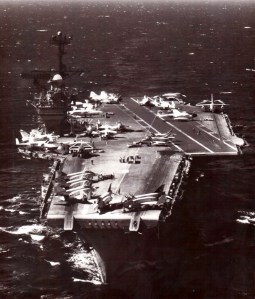
USS Ranger at sea in 1968 – US Navy Photo, cleared for publication
While sorting through boxes of old file folders in the garage, I came across a 1968 press kit for the decommissioned aircraft carrier USS Ranger (CVA-61). (The Ranger was active between 1957 and 1993).
These kits were handed out to reporters and special guests who came aboard ship in port or at sea. They contained information about the ship’s history and its departments, aircraft, and a variety of photographs of the ship, planes and personnel.
In addition to the carrier’s missions that stretched between the Vietnam War and the Gulf War, the Ranger is notable for being the first carrier to be built from the keel up with an angled deck.
A Portland Oregon foundation worked for some time to acquire the ship for use as a museum, but the effort fell through when it didn’t gain enough support from high-profile financial and political individuals and groups to put together a working plan that met the navy’s strict requirements.
To learn more about this effort, see USS Ranger Closer to New Home in Portland and Navy to Scrap Historic Aircraft Carrier – UPDATE.
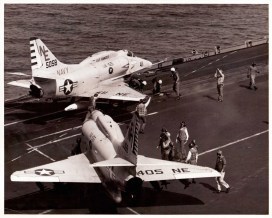
Flight deck crews move two A-4 Skyhawks – US Navy photo, cleared for publication.
Consequently, the ship is being scrapped this year. Had the ship been converted into a museum, I would have sent them this press kit, copies of the shipboard magazine and cruise book, and a fair number of news releases I wrote for the military and civilian press while on board.
Ranger in Films
As Wikipedia reminds us, “Ranger appeared on television in The Six Million Dollar Man, Baa Baa Black Sheep and in the films Top Gun, Star Trek IV: The Voyage Home (standing in for the carrier USS Enterprise), and Flight of the Intruder.”
I worked in the ship’s public affairs office and put together a lot of these kits during my time on board in 1968 and 1969.
The press kit usually contained pictures of the aircraft of from the squadrons assigned to the ship during the October-to-May deployments to the western pacific. The A-4s in this photo belonged to Squadron VA-155, the “Silver Foxes.
In addition to the standard materials, we included copies of the latest news releases about shipboard operations and deployments as well as visits by film companies and USO shows.
Finding Your Way Around
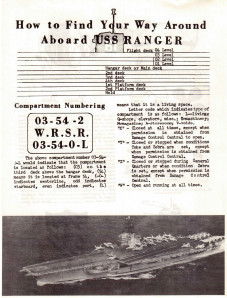
Handout Sheet
Television shows like JAG and NCIS frequently show shore-based navy and marine personnel getting lost on board aircraft carriers when trying to find their way between the bridge, the mess decks and their quarters. It’s easy to do. We cleared up the confusion for guests by handing out a diagram that showed how the decks were numbered.
The sheet noted that every single compartment on board has a number indicating its deck, location, purpose and opened/closed status based on the ship’s “Material Condition of Readiness” (XRAY, YOKE, ZEBRA and WILLIAM).
I read with interest the news stories about the USS Gerald R. Ford (CVN-78) which is currently undergoing tests prior to its entry into the fleet in 2016. The changes in design and capability of the Forrestal-class carriers ( Forrestal, Saratoga, Ranger and Independence) built in the 1950s and the new Ford-class carriers (to include the Ford, Kennedy and Enterprise) is amazing. Even the sailors serving aboard the current Nimitz-class carriers will see exciting changes.
The Ford-class carriers will have three aircraft elevators, upgraded RADAR systems, and more efficient nuclear power plants, and Electromagnetic Aircraft Launch System (EMALS) rather than conventional steam pistons for launching aircraft.
I suppose ships will continue to use some form of press kit, perhaps printed off as needed with different combinations of pages and pictures when dignitaries and reporters arrive. Most of these folks will probably look at the skips’ websites and print out their own press materials before they arrive. When describing the Ranger to others, we mentioned the size of the flight deck, the weight of the anchors, and the number of crew members.
We also said the ship was a floating city. I see that some things don’t change. In the news stories about the Gerald R. Ford, that phrase is still being used.
 Malcolm R. Campbell’s novels include “The Sailor,” an adventure inspired by his two western pacific cruises on board the USS Ranger. Ranger was, in those days, called the top gun of the Pacific Fleet.
Malcolm R. Campbell’s novels include “The Sailor,” an adventure inspired by his two western pacific cruises on board the USS Ranger. Ranger was, in those days, called the top gun of the Pacific Fleet.


Memories form an old press kit for the USS Ranger

USS Ranger at sea in 1968 – US Navy Photo, cleared for publication
While sorting through boxes of old file folders in the garage, I came across a 1968 press kit for the decommissioned aircraft carrier USS Ranger (CVA-61). (The Ranger was active between 1957 and 1993).
These kits were handed out to reporters and special guests who came aboard ship in port or at sea. They contained information about the ship’s history and its departments, aircraft, and a variety of photographs of the ship, planes and personnel.
In addition to the carrier’s missions that stretched between the Vietnam War and the Gulf War, the Ranger is notable for being the first carrier to be built from the keel up with an angled deck.
A Portland Oregon foundation worked for some time to acquire the ship for use as a museum, but the effort fell through when it didn’t gain enough support from high-profile financial and political individuals and groups to put together a working plan that met the navy’s strict requirements.
To learn more about this effort, see USS Ranger Closer to New Home in Portland and Navy to Scrap Historic Aircraft Carrier – UPDATE.

Flight deck crews move two A-4 Skyhawks – US Navy photo, cleared for publication.
Consequently, the ship is being scrapped this year. Had the ship been converted into a museum, I would have sent them this press kit, copies of the shipboard magazine and cruise book, and a fair number of news releases I wrote for the military and civilian press while on board.
Ranger in Films
As Wikipedia reminds us, “Ranger appeared on television in The Six Million Dollar Man, Baa Baa Black Sheep and in the films Top Gun, Star Trek IV: The Voyage Home (standing in for the carrier USS Enterprise), and Flight of the Intruder.”
I worked in the ship’s public affairs office and put together a lot of these kits during my time on board in 1968 and 1969.
The press kit usually contained pictures of the aircraft of from the squadrons assigned to the ship during the October-to-May deployments to the western pacific. The A-4s in this photo belonged to Squadron VA-155, the “Silver Foxes.
In addition to the standard materials, we included copies of the latest news releases about shipboard operations and deployments as well as visits by film companies and USO shows.
Finding Your Way Around

Handout Sheet
Television shows like JAG and NCIS frequently show shore-based navy and marine personnel getting lost on board aircraft carriers when trying to find their way between the bridge, the mess decks and their quarters. It’s easy to do. We cleared up the confusion for guests by handing out a diagram that showed how the decks were numbered.
The sheet noted that every single compartment on board has a number indicating its deck, location, purpose and opened/closed status based on the ship’s “Material Condition of Readiness” (XRAY, YOKE, ZEBRA and WILLIAM).
I read with interest the news stories about the USS Gerald R. Ford (CVN-78) which is currently undergoing tests prior to its entry into the fleet in 2016. The changes in design and capability of the Forrestal-class carriers ( Forrestal, Saratoga, Ranger and Independence) built in the 1950s and the new Ford-class carriers (to include the Ford, Kennedy and Enterprise) is amazing. Even the sailors serving aboard the current Nimitz-class carriers will see exciting changes.
The Ford-class carriers will have three aircraft elevators, upgraded RADAR systems, and more efficient nuclear power plants, and Electromagnetic Aircraft Launch System (EMALS) rather than conventional steam pistons for launching aircraft.
I suppose ships will continue to use some form of press kit, perhaps printed off as needed with different combinations of pages and pictures when dignitaries and reporters arrive. Most of these folks will probably look at the skips’ websites and print out their own press materials before they arrive. When describing the Ranger to others, we mentioned the size of the flight deck, the weight of the anchors, and the number of crew members.
We also said the ship was a floating city. I see that some things don’t change. In the news stories about the Gerald R. Ford, that phrase is still being used.
 Malcolm R. Campbell’s novels include “The Sailor,” an adventure inspired by his two western pacific cruises on board the USS Ranger. Ranger was, in those days, called the top gun of the Pacific Fleet.
Malcolm R. Campbell’s novels include “The Sailor,” an adventure inspired by his two western pacific cruises on board the USS Ranger. Ranger was, in those days, called the top gun of the Pacific Fleet.


March 8, 2014
Artwork Contest for Annual Glacier Park Pass
from NPS Glacier National Park
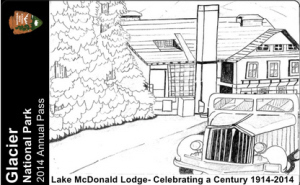
This year’s pass was submitted by Glacier High School Student Valarie Kittle
Glacier National Park and the Glacier National Park Conservancy are accepting art submissions from sixth through twelfth grade students for the annual park pass artwork contest. The winning art will be displayed on the 2015 Glacier National Park Annual Park Pass.
Students are encouraged to submit art that focuses on the natural resources protected and preserved in the park. Each entry must include original artwork. Entries will be judged on the use of color, and design and accuracy of a scene that depicts one or more natural resource of the park. The deadline to submit artwork is April 11. Visit the park’s webpage at http://www.nps.gov/glac/forkids/index.htm for more information and an application, or contact the park at 406-888-7800.
The purpose of the annual pass artwork contest is to get students engaged with Glacier National Park, while creating an awareness of stewardship and increase an understanding about resources protected in the park.
The pass featuring the winning artwork will be available in January 2015, and more than 14,000 passes will be issued during the year. The top three winners will receive a gift certificate from the Glacier National Park Conservancy.
Last year Glacier High School Student Valarie Kittle submitted the winning entry. Kittle’s image of the historic Lake McDonald Lodge is highlighted on this year’s annual park pass.
-
Since some 14,000 of these passes are sold to visitors each year, the winning artwork will have a great audience.
 Malcolm R. Campbell is the author of fantasy adventure novels set partially in Glacier National Park, including “The Sun Singer,” “Sarabande” and “The Seeker.”
Malcolm R. Campbell is the author of fantasy adventure novels set partially in Glacier National Park, including “The Sun Singer,” “Sarabande” and “The Seeker.”


March 4, 2014
That Navy Slang Gets More Hits Than Almost Anything Else
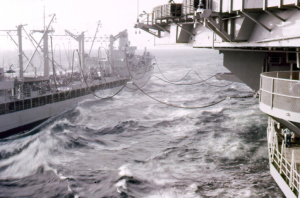 Our of this blog’s 60,000 page views, a surprisingly high number of people are searching for navy slang. My three-year-old post “Heave out and Trice Up” still gets dozens of hits a week. And just to think, I wrote it for kicks.
Our of this blog’s 60,000 page views, a surprisingly high number of people are searching for navy slang. My three-year-old post “Heave out and Trice Up” still gets dozens of hits a week. And just to think, I wrote it for kicks.
I was working on my novel The Sailor. Needless to say, that novel has a lot of navy slang in it. I got to wondering: “Do non-sailors know what any of this stuff means?” There are dozens of sites about navy slang, some of which allow people to post questions. Apparently the words “heave out and trice up” are asked about more often than anything else.
As the Vietnam War fades into memory, I can understand why there would be fewer people asking about Hanoi Hannah, the “Tokyo Rose” of her day. And, as cigarette smoking becomes less pervasive in our culture, fewer people are asking what it means when a ship’s 1-MC public address system informs the crew that “the smoking lamp is lighted.” In fact, the interior spaces of ships are now being declared “smoke free.” Of course, the smoking lamp is out while loading ammunition or fuel during an unrep (Underway Replenishment as shown in the photo.)
But “heave out and trice up”? I’ll give you a clue: it has nothing to do with getting seasick, an event that’s much more likely on a can (no, not the head, but a destroyer) than an aircraft carrier during heavy weather. Part of the problem with the phrase is the word “trice.” We don’t use that word around the office much these days. It’s a sailor’s term, meaning to tie up or secure something, as in a sail or a bunk.
After seeing old pirate movies as kids, we went around shouting “avast,” which means to stop doing what you’re doing–such as trying to get away. When pirates shouted “avast” to a merchant ship they wanted to board, they expect the captain of the hapless boat to heave to, meaning to bring the ship to a stop.”
Wikipedia has an alphabetized glossary of navy slang. If you’re about to join the navy, buy a sailboat, be hired on to a cruise ship, or play pirate games with the kids, this glossary is much easier than searching through old books for jargon until 0-dark-thirty.
As we said in Navy bootcamp, those attending class were expected to take a good set of notes in order to past the tests. If you can’t past the tests, much less figure out what’s going on aboard ship, you’re pretty much considered a bent shitcan whether you’re assigned to a can or a birdfarm.
My heave out and trice up post has received more hits than any other post, except one: a book review of Raymond Khoury’s “The Last Templar.” Go figure.
 Malcolm R. Campbell is the author of “The Sailor,” a Vietnam-era novel about life on board an aircraft carrier.
Malcolm R. Campbell is the author of “The Sailor,” a Vietnam-era novel about life on board an aircraft carrier.


March 1, 2014
Review: ‘Suicide Supper Club’ by Rhett DeVane
 “Life is crap and the weather is stupid-hot: reasons enough for four small-town Southern women to plan ‘the easy way out,’” the publisher’s description for Suicide Supper Club informs us. Rhett DeVane (“Cathead Crazy”) brings her trademark sparkling prose and deep insights into human nature to this story of the darkness and light in the lives of Abby, Loiscell, Sheila and “Choo-choo.”
“Life is crap and the weather is stupid-hot: reasons enough for four small-town Southern women to plan ‘the easy way out,’” the publisher’s description for Suicide Supper Club informs us. Rhett DeVane (“Cathead Crazy”) brings her trademark sparkling prose and deep insights into human nature to this story of the darkness and light in the lives of Abby, Loiscell, Sheila and “Choo-choo.”
Truth be told, the light is in short supply.
The lives of these kindred spirits play out in the Florida Panhandle between Chattahoochee, a small town with a main street dominated by a mental institution, and Tallahassee, the state capital, 44 miles away. Most of the festering family secrets, declining health, estrangement and physical abuse live and breathe in Chattahoochee for Abby, Loiscell, Sheila and Choo-choo. Tallahassee is for shopping, fine dining, cancer treatments and a prospective appointment with a hit man.
Suicide and humor are usually mutually exclusive worlds. But they seamlessly merge through DeVane’s inventive plot, fully realized characters, knowledge of Southern life and customs, and sense of place. Readers cannot help but feel the characters’ reactions to the darkness in their lives and, quite possibly, understand the rationale for a suicide supper club.
The light in Suicide Supper Club comes from the great love and esteem the four women have for each other and the ways they find for coping with the Florida heat and the crap. I grew up in the Florida panhandle, so it was easy for me to see near the beginning of this novel that when it comes to Chattahoochee and Tallahassee and the people who live there, Rhett DeVane gets it right.
You’ll see that, too, long before you reach the last page and learn whether or not Abby, Loiscell, Sheila and Choo-choo are still among the living.



